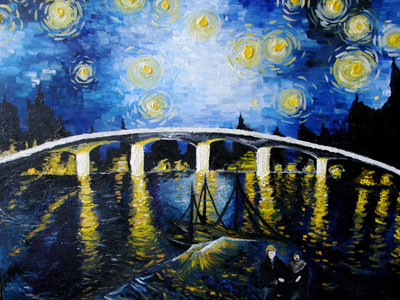All Nonfiction
- Bullying
- Books
- Academic
- Author Interviews
- Celebrity interviews
- College Articles
- College Essays
- Educator of the Year
- Heroes
- Interviews
- Memoir
- Personal Experience
- Sports
- Travel & Culture
All Opinions
- Bullying
- Current Events / Politics
- Discrimination
- Drugs / Alcohol / Smoking
- Entertainment / Celebrities
- Environment
- Love / Relationships
- Movies / Music / TV
- Pop Culture / Trends
- School / College
- Social Issues / Civics
- Spirituality / Religion
- Sports / Hobbies
All Hot Topics
- Bullying
- Community Service
- Environment
- Health
- Letters to the Editor
- Pride & Prejudice
- What Matters
- Back
Summer Guide
- Program Links
- Program Reviews
- Back
College Guide
- College Links
- College Reviews
- College Essays
- College Articles
- Back
Just Another Theory
For centuries, scientists have been attempting to combine all well-known scientific theories into one big theory known as the Theory of Everything. The Theory of Everything is supposed to explain all the laws of the universe. Scientists are getting closer and closer to unveiling this ultimate theory. Some believe that the discovery of the final answer would mean that all curiosities in the field of science would be put to rest. No one would need to perform anymore experiments or use the scientific method to answer their questions about the real world. Like all scientific theories, however, the Theory of Everything needs to be repeatedly proven through several observations and accurate experiments in order to be considered true; that can only be done with the scientific method. There is also a chance that the Theory of Everything would be refined or even disproved in the future. Therefore, if a Theory of Everything is proven experimentally, it would not be the end of the scientific method and in turn science as a field of study.
The scientific method has helped prove many theories that were created ages ago. The famous polymath Galileo Galilei, for example, helped prove Nicolaus Copernicus’s heliocentric theory by using a telescope (Polaris Project). Isaac Newton’s theory— which eventually became a law— of gravitation from 1687 was proven to be true when it inspired the discovery of the planet Neptune nearly two centuries later (Solar System: Neptune). Many observations and experiments helped show that these theories were correct.
Although the scientific method has helped prove theories, it has also disproved them. For example, Galileo disproved Aristotle’s theory that a heavier object will fall faster than a lighter object if both are dropped from the same height. Galileo demonstrated that two objects being dropped from the same height, regardless of their weight or mass, will reach the ground at the exact same time and concluded that “the speed of a falling body is independent of its weight” (Motion of Falling Bodies). Albert Einstein enhanced Newton’s theory of gravity by concluding that light, which has no mass, is also affected by gravity (Law of Gravity and Theory of Relativity). Some theories may be true for some time until someone debunks them.
The Theory of Everything can be similarly affected as the other mentioned theories have. The scientific method has played a key role in proving theories to be true, refining theories with more information, or disproving them. A possible final answer to the universe cannot be the end of science. If the scientific method were to come to an end, no one would be able to prove or disprove the validity of the ultimate theory. Without the scientific method, we would miss the chance to find more information about the Theory of Everything. We would never truly know whether or not we have fulfilled the ultimate task of science.
Works Cited
“Galileo”. Polaris Project Evening Star. Dept. of Physics and Astronomy. Iowa State University, 2000-2001. Web. 30 November 2017.
Lisle, Jason. “The Solar System: Neptune”. Institute for Creation Research. .n.p., 2014. Web. 30 November 2017.
Wudka, Jose. “The Motion of Falling Bodies”. UCR Physics. n.p., 1998. Web. 30 November 2017.
“Newton’s Law of Gravity and Einstein’s Theory of General Relativity”. Texas Gateway (TEA). Texas Education Agency, n.d. Web. 30 November 2017

Similar Articles
JOIN THE DISCUSSION
This article has 0 comments.
